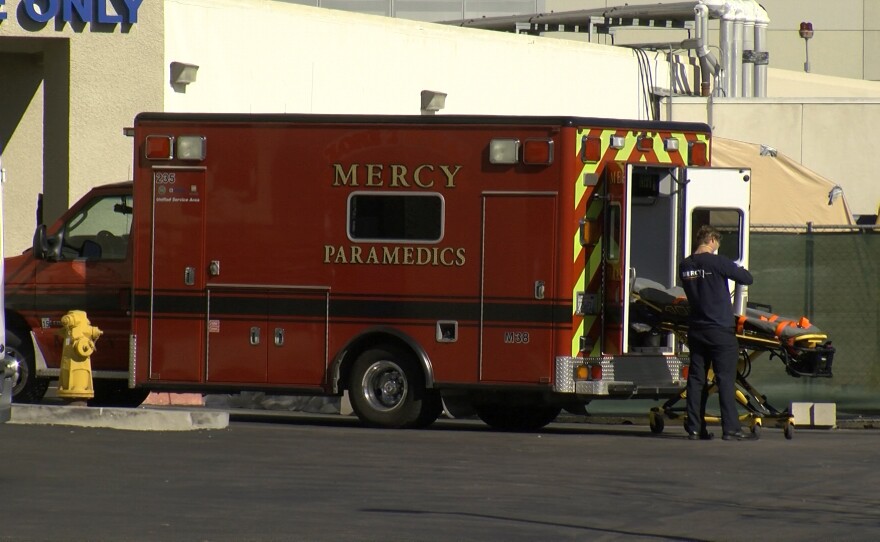A new policy announced Tuesday could temporarily stop ambulances in San Diego County from delivering patients to certain hospitals.
Diversion is not uncommon when emergency departments fill up. Generally, it means hospitals only take ambulance deliveries from within their own designated geographic areas, with a few exceptions.
But never before have hospitals in San Diego County had the ability to completely stop the flow of all ambulances to their facilities.
Sharp Memorial Hospital’s Director of Emergency Services, Joshua McCabe, said that situation is now happening for hospitals who request and are approved for complete ambulance diversion.
“We just went on this new diversion yesterday, for the first time,” McCabe said. “We had about 17 medics that were sent to Sharp Memorial Emergency Department in a 30 minute period. As you can imagine with the surge that we are seeing from COVID, receiving an additional 17 acute patients that come from a 9-1-1 medic can be very challenging.”
The complete diversion program sends patients to other nearby hospitals that are not on bypass, for a maximum of four hours. And the protocol can be reapplied if needed.
RELATED: California Virus Surge Brings Field Hospitals, Body Bags
McCabe said patients will not be turned away if they have uncontrollable life-threatening problems, such as a stroke or heart attack.
“What this diversion program, that the county and the community hospitals are working on together, allows us to do is take a pause, and say please do not bring a patient to us now by medic. We can't offload them timely,” he said. “So they are able to go to a hospital that can offload them, timely, and then get back out to the community so they can respond to other 911 calls.”
The change to county hospital protocol comes as intensive care capacity across Southern California and the state continues to dwindle.
Local hospitals in San Diego, including Sharp HealthCare, have reached out to the county or state for staffing help during the current wave of COVID-19 cases.
“To finally be getting this influx and this massive surge is very difficult,” McCabe said. “We have seen though at Sharp Healthcare our nurses and physicians just stepping up — many are taking extra shifts, we have volunteers willing to flow to other units to help out.”
On the day the complete ambulance diversion protocol was announce San Diego County reported 32 COVID-19 related deaths. But there is a light at the end of the tunnel with coronavirus vaccines on the way, McCabe said.
We are, however, still in the middle of the tunnel. As of Wednesday, the ICU capacity for the Southern California region has fallen to 0.5%, the state announced.







